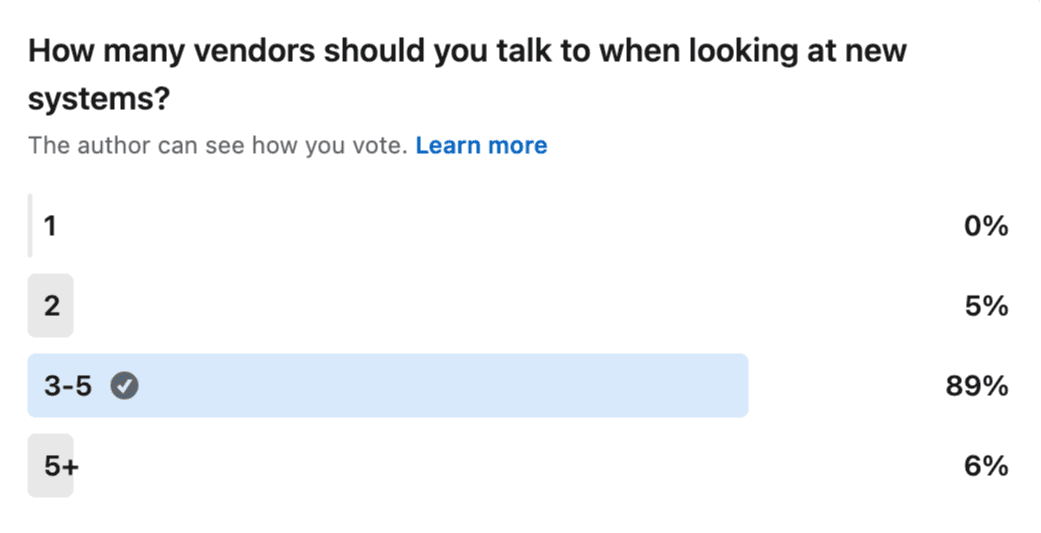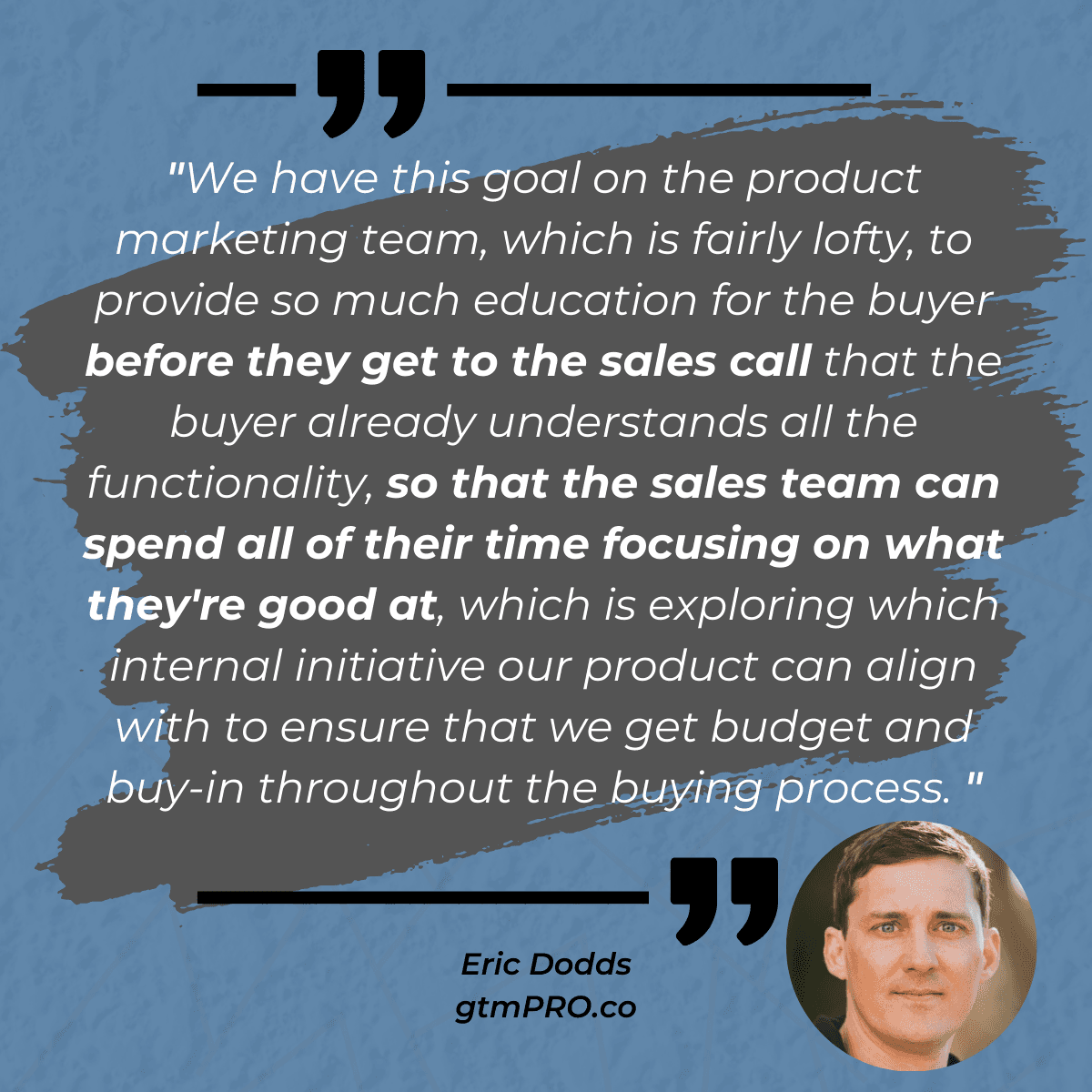B2B Sales
Every deal is competitive. Embrace it.
How many alternatives do B2B Buyers seriously consider?
On average, 3.
That's according to a recent study by Wynter.
Last week we shared a poll that suggested 89% of Buyers evaluated 3-5 alternatives. Most likely heavily skewed around 3.

My 84-year old father, who was raised on a farm in Central Iowa and went on to became an Engineer, instilled in me decades ago a very simple rule.
"Always get 3 quotes. Then you'll know."
Getting on the "Day One" List
In the lower middle market, it is probable that there are actually hundreds of providers in a particular category. So in that environment, how in the world to we make this (very) short list of 3 (or 4 or 5)?
Enable the Buyer to Buy
Last week, we had the chance to spend some time with our friend Eric Dodds, who runs Product Marketing for high-growth software company in the data space. During that discussion, he said something that had us smiling ear to ear.

"… so the sales team can spend all of their time focusing on what they're good at"
(and, provides the greatest impact to both the Buyer and our probability on the deal).
So why do we ask our most expensive and least scalable GTM resources (sales reps) to complete a basic product demo over and over and over?
Because we have "Sales" mentality vs a "Buyer Enablement" mentality.
A Sales mentality wants to control the discussion so that we can decide how to present the product based on the what we believe are the Buyer's most painful problems (even if we aren't a great solution for those problems).
A Buyer Enablement mentality is focused on helping the Buyer complete the "Jobs" required to make a confident decision on a solution, especially as they bounce back and forth between:
Problem Identification/Definition
Solution Exploration
Requirements Building
Every time a Buyer interacts with a solution provider, they are, simultaneously:
validating, modifying or redefining the problem
gaining clarity on solution implementation and considering trade-offs
prioritizing (and reprioritizing) capabilities
So, if we only have an hour (at most) with a Buyer on our Discovery/Demo call, why waste it providing a basic product demo when we could instead be going deeper to enable them to buy?
This is not a Sales issue. This is not a Marketing issue. This is a GTM issue, which means we need systems thinking.
What information does the Buyer need?
Where in the process is this information needed?
In what medium(s) does our Buyer prefer to consume this information?
How can we integrate this information so that the experience is cohesive?
How are we going to measure effectiveness?
Answering questions like this, before we set Marketing, Sales, Product and other members of the GTM team off to build stuff, will help keep the team focused on the Buyer and executing with a "build once, distribute many" mentality.
Getting Started
A simple way to get started is to take a quick look at the typical discovery/demo call.
How does every demo start and what is the typical flow? Make a video of this. Then maybe even an interactive demo.
What are the 5 most common questions Buyers ask about implementing the solution? Provide an FAQ on the product/solution page and/or in the pre-demo email.
Then, think of the Buyer's journey in "Zones," in this case:
Request a demo experience
Do we expose the product to the Buyer, on-demand and ungated, prior to visiting this page?
What info is on the page to enable the Buyer? Do we set expectations?
Can the Buyer book a meeting immediately or do they need to wait to schedule?
Post-submit/Pre-demo
Is there a "Thank You" page? What does it say?
Is there an automated email sequence? If so, does it help the Buyer?
Discovery/Demo call experience
Can we start with an expectation that the Buyer understand the basics of our solution?
Do we clarify what the Buyer needs from the call and set expectations on how we will deliver against that?
Stakeholder experience (post-discovery/demo call)
Do we properly arm our Champion with the information they need to convey to their stakeholders, in the format preferred by those stakeholders?
Do we have clarity on their internal process, perhaps even providing best practices on how to assess alternatives?
Instead of working on 1-2 elements within each Zone, consider getting a complete 1.0 version of an end-to-end experience within a Zone, then move on to the next.
We need to assume that every situation is competitive, especially for companies in the lower middle market. If we focus our collective efforts on enabling the buyer to buy, instead of "selling against" our competition, we will put ourselves in a superior position to succeed.





